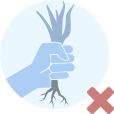
Go to our visitor centres, information points and ecomuseums to get the most out of your visit.
The Rio Tinto is the backbone of this Special Area of Conservation, going from Nerva to San Juan del Puerto, and standing out for its role as an ecological corridor between Doñana and Sierra Morena. It is a natural way of connecting the wildlife, as well as being a key part of the river structuring and its declaration as Protected Landscape (Rio Tinto) Mining Basin. It has an extraordinarily unique landscape; incredible morphology and magical waters caused by the mining activity, making it a site of interest for scientists, photographers, and tourists alike.
The ecological corridor of Rio Tinto incorporates linear elements such as its main tributary streams (Corumbrel, Candón, Gallego, Giraldo, de Bayas), and allows the interconnection of different areas and ecosystems. It also has large areas of forest in the northern parts, namely in Niebla, Valverde del Camino, Zalamea la Real, El Berrocal and Escacena del Campo municipalities, with different plant formations that provide a huge variety of ecosystems and shelter for wildlife, such as the Iberian lynx; whose conservation is one of the ecological corridor´s main priorities. Habitats of community interest such as riverine forests of willows and poplars, Mediterranean wetland meadows filled with tall grasses, and evergreen meadows featuring various species of oak, along with pine forests, eucalyptus trees and even rain-fed crops such as olive groves.
The flora and fauna in the area, with some species included in the Andalusian Catalogue of Threatened Species such as “mine heather” (Erica andevalensis), and the numerous mining industry buildings, some restored, are both an educational tool and attract tourists. This is the case of the Via del Tinto trail for example, which is based on the old mining railway route and in the process of being made into a cycle route. It is currently operational in the section between the Berrocal station and Los Frailes. In terms of heritage, the area boasts a series of water mills, and interesting sites such as Dólmenes del Pozuelo in Zalamea la Real, and Los Gabrieles in Valverde del Camino, on top of the wonder that is Rio Tinto itself.




Go to our visitor centres, information points and ecomuseums to get the most out of your visit.

Follow the recommendations and comply with the regulations at all times

Respect the facilities put at your disposal. We all pay for its maintenance.

Help prevent fires. Do not throw cigarettes or any other object that produces combustion.

Trash doesn't come back alone. Take it with you to the nearest container. Reduce, reuse, recycle.

Noise is another form of pollution. In silence you will enjoy your experience more.

Live respectfully with the locals and other users. Respect private property.

Facilitate use for people with special needs.

By consuming local products and counting on local companies, you will contribute to rural development.

Practice responsible tourism and committed to the environment. Be a true ecotourist!

Never leave your pet in the wild. It would endanger the flora and fauna of the place.

Get around in a sustainable way: public transport, bicycle, on foot, electric or shared vehicle ... Park in the designated places

Do not leave a trace of your passage through nature. The best memory you can take with you is your own photograph.

Your safety is our concern, but it is your responsibility.

The conservation of natural spaces is also in your hands. Thank you for your collaboration!